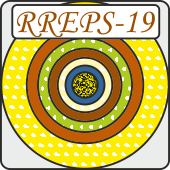Speaker
Description
Radiation of charged particles moving in presence of dielectric targets is of interests for various applications in accelerator and beam physics [1, 2]. Typically, the size of the target is much larger than the wavelengths under consideration. This fact gives us an obvious small parameter of the problem (ratio between the wavelength and the target dimension) and allows developing approximate methods of analysis. We have developed two methods: the "ray-optical method" [3, 4] and the "aperture method" [5–8]. These methods can be very effective for all situations where we can find the tangential field components on the "aperture" which is an object's boundary illuminated by Cherenkov radiation. As a rule, this cannot be done rigorously. But for high-frequency (in the aforementioned sense) radiation, this can often be done approximately.
Here we consider several new examples of the use of the developed methods. In particular, the so-called dielectric concentrator of Cherenkov radiation is studied in the situation where the charge moves parallel to the structure axis with a certain displacement from it (a problem without axial symmetry). The influence of the trajectory shift on the effect of radiation focusing is analyzed. Next, we consider the problem of radiation from a dielectric ball with a vacuum channel (the charged particle bunch moves along the channel axis). In this case, both the ray-optical method and the aperture one are used. The main analytical results are obtained. They are compared with simulations in COMSOL Multiphysics. Various physical effects are demonstrated including the effect of radiation concentration in certain small areas and the phenomenon of the "Cherenkov spotlight" in the Fraunhofer zone. Prospects for using the ray-optical and aperture methods are discussed.
The work was supported by the Russian Science Foundation (Grant No. 18-72-10137).
- A.P. Potylitsyn et al., J. Phys.: Conf. Ser., 236, 012025.
- R. Kieffer et al., Phys. Rev. Lett., 121, 054802.
- E.S. Belonogaya, A. V. Tyukhtin, and S.N. Galyamin, Phys. Rev. E, 87, 043201.
- E.S. Belonogaya, S.N. Galyamin, and A. V. Tyukhtin, J. Opt. Soc. Am. B, 32, p.649.
- S. N. Galyamin and A.V. Tyukhtin, Phys. Rev. Lett., 113, 064802.
- A.V. Tyukhtin, V.V. Vorobev, E.S. Belonogaya, and S.N. Galyamin, Journal of Instrumentation, 13, C02033.
- A.V. Tyukhtin, V.V. Vorobev, S.N. Galyamin, and E.S. Belonogaya, Phys. Rev. AB, 22, 012802.
- A.V. Tyukhtin, S.N. Galyamin, and V.V. Vorobev, Phys. Rev. A, 99, 023810.
